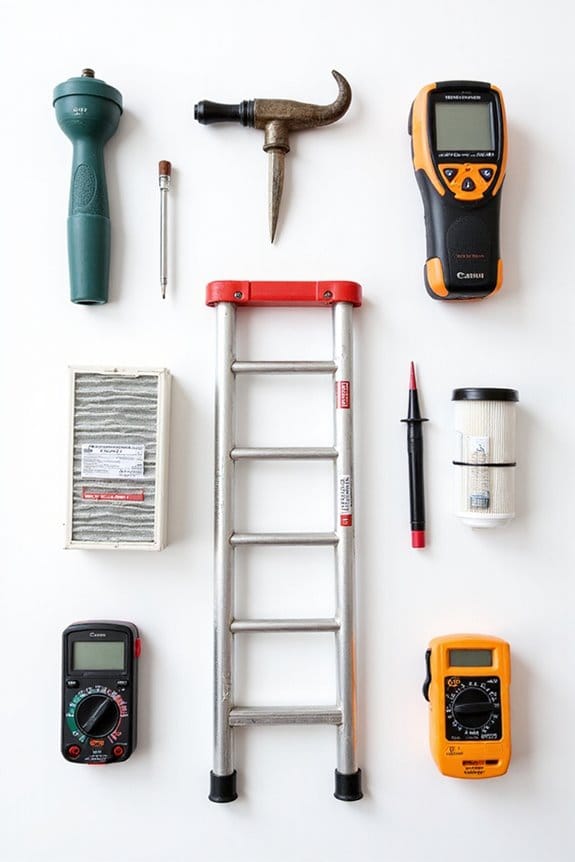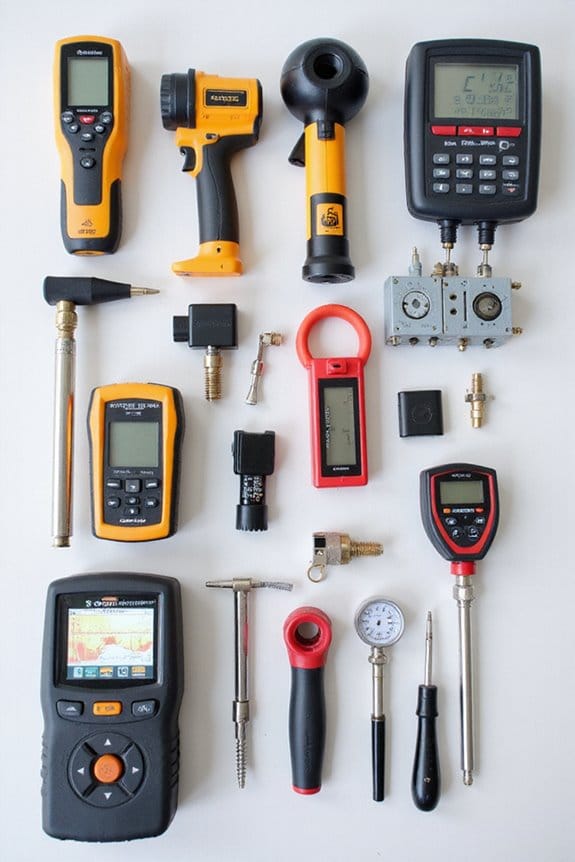Tracking your home maintenance history can be simpler than it sounds! I recommend following these steps: 1) Use a binder or digital folders to organize schedules, warranties, and receipts. 2) Log tasks with dates and costs to keep track of everything. 3) Consider using apps like HomeZada for reminders. It’s like having a personal assistant for your home! Keeping these records not just saves money but can even boost resale value. Want to know more ways to make it easier?
Key Takeaways
- Create a dedicated binder or digital folder to organize maintenance schedules, cleaning lists, and repair records for easy access.
- Use apps like HomeZada or MaintainX to set reminders for upcoming maintenance tasks and log completed work.
- Document essential details such as dates, costs, and service providers to maintain a comprehensive history of home maintenance.
- Snap photos before and after repairs to visually document changes and provide reference for future maintenance.
- Regularly review and update your records after each maintenance task to ensure accuracy and consistency in tracking.
Importance of Home Maintenance Records
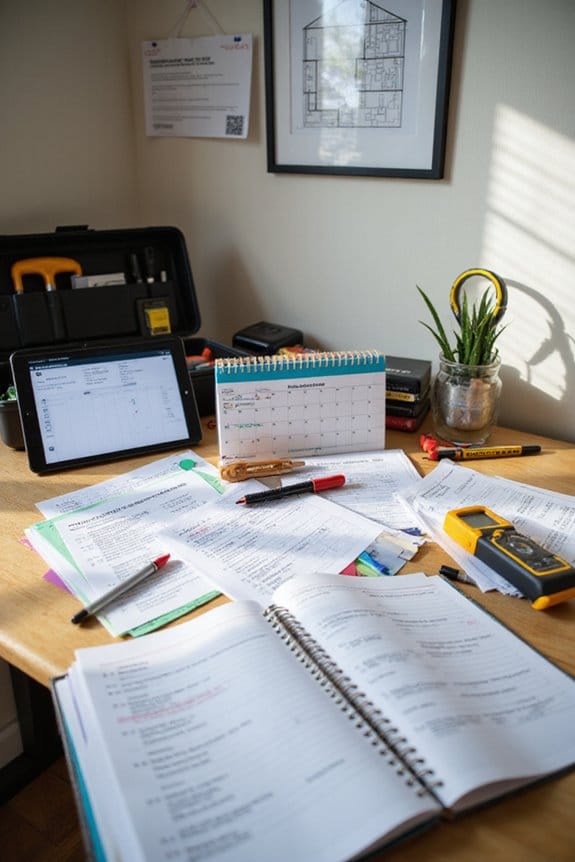
When it comes to homeownership, the importance of keeping maintenance records can’t be overstated. Here’s why those records matter:
- Financial Implications: They help catch minor issues before they escalate into costly repairs, saving you money in the long run. Plus, documenting warranty repairs can reduce out-of-pocket expenses.
- Resale Advantages: A well-maintained home with clear records can boost its resale value by up to 15%. Buyers feel more confident when they see a detailed maintenance history, making your property stand out in a crowded market.
Ultimately, keeping these records isn’t just about staying organized. It’s a savvy financial move that can lead to significant savings and a smoother selling experience. Trust me, it’s worth the effort!
Methods for Organizing Your Records
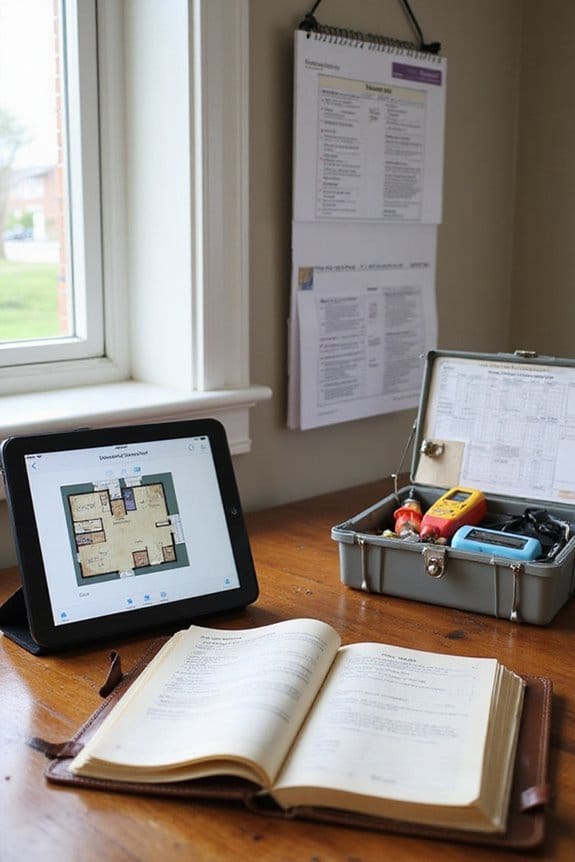
Keeping track of your home maintenance history is a smart move, but how you organize those records can make all the difference. Here are my top methods:
- Binder Organization: Use a dedicated binder with sections for schedules, cleaning lists, and repairs. It’ll save you from rummaging through piles of paper.
- Digital Filing: Create folders on your computer or cloud storage, sorting documents by appliance or date. Don’t forget to digitize important papers using apps like Scanbot!
- Home Maintenance Logs: Keep a log of tasks with details like costs and dates. This helps avoid confusion later.
- Paperwork Management: Maintain both physical and digital copies of warranties and receipts. Trust me, it’ll pay off when you need to find something fast! Additionally, consider organizing your tools with wall-mounted storage solutions to help keep everything accessible and tidy.
Utilizing Technology for Tracking
Utilizing technology for tracking home maintenance can feel like a game changer, especially if you’ve ever lost track of an important repair or service date. Here’s how I make it work for me:
- Digital Apps: I use apps like HomeZada or MaintainX. They send me reminders for due tasks, so I never miss a beat.
- Cloud Storage: I keep all my important documents in the cloud. This way, I can access maintenance records anytime, anywhere.
- Real-Time Updates: Many apps provide mobile access, helping me track tasks and communicate with service providers on the go. Additionally, I ensure my home monitoring system includes motion detection features, as they enhance security while I’m away.
With these tools, I’ve streamlined my home maintenance, saving both time and money. Trust me, it’s worth it!
Best Practices for Maintaining Records

Once you’ve set up your tech tools for tracking home maintenance, the next step is keeping those records organized. Here are some best practices I swear by:
- Comprehensive Filing: Create sections for manuals, warranties, and service records. Use labeled binders for easy access.
- Record Essential Details: Log dates, task types, and service providers. Tracking costs helps with budgeting—trust me, it pays off!
- Regular Reviews: Schedule updates after maintenance tasks. Consistency boosts record retention.
- Visual Documentation: Snap photos before and after repairs. They’re great for reference and can save you from future mishaps!
Advanced Tools for Enhanced Record Keeping
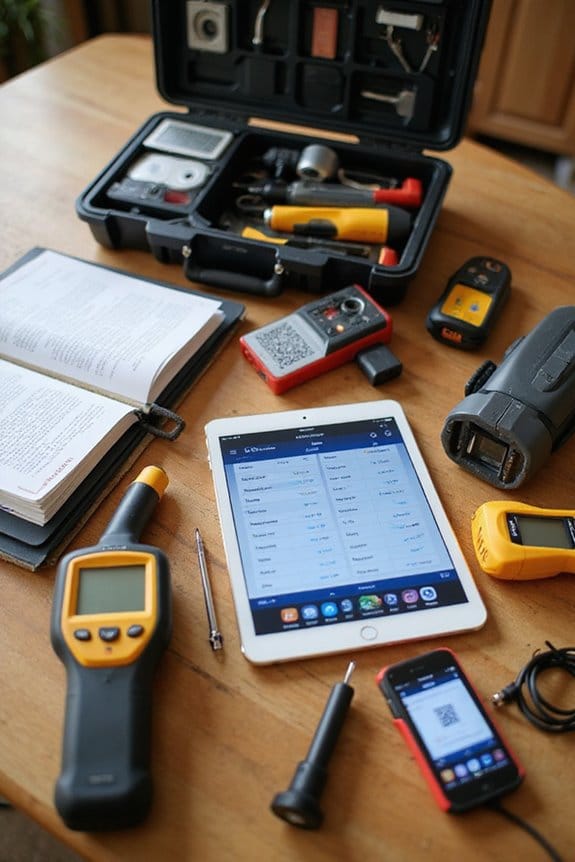
While it might feel overwhelming to keep track of all your home maintenance records, the right advanced tools can make it a breeze. Here are some options I recommend:
- Digital Home Management Platforms: These platforms, like HomeZada, offer cloud synchronization for easy access and smart reminders for tasks.
- Computerized Maintenance Management Systems (CMMS): Perfect for detailed tracking, they let you organize maintenance history and create work orders on the go.
- Home Maintenance Mobile Apps: These handy apps help manage everything from small repairs to seasonal tasks, and support multimedia documentation like photos of your projects.
Utilizing these tools can turn home maintenance from a chore into a manageable task, keeping your records organized and accessible! Additionally, incorporating advanced leak detection equipment can help mitigate water damage and enhance your home maintenance strategy.
Benefits of a Detailed Maintenance History
Having a detailed maintenance history for your home isn’t just a good idea—it’s a smart investment! Here are some benefits that can really pay off:
- Savings Potential: Early identification of minor issues can prevent costly repairs later. Plus, you can leverage warranties, saving you out-of-pocket expenses.
- Buyer Confidence: A thorough maintenance log showcases a well-cared-for home, making it more appealing to potential buyers. When they see clear records, they feel more secure in their purchase.
- Increased Property Value: Well-documented upkeep can justify your asking price and speed up the sale process. Additionally, maintaining high-quality tools can help ensure efficient repairs and upgrades, contributing to your home’s overall value.
Keeping organized records not only helps you manage costs but also gives you peace of mind. Who knew home maintenance could be this rewarding?
Frequently Asked Questions
How Often Should I Update My Home Maintenance Records?
I update my home maintenance records immediately after each task and review them quarterly. Keeping my maintenance frequency consistent and ensuring good record organization helps me stay on top of everything and prevents costly surprises.
What Information Should I Include in My Maintenance Records?
When keeping a maintenance log, I include service dates, details on repairs, inspections, and upgrades. It helps me track everything from HVAC services to pest control, ensuring I stay on top of my home’s needs.
Can I Use a Mobile App for Tracking Maintenance History?
I love using mobile apps for tracking maintenance history. They offer convenience, with reminders and organized records, making it easier to keep everything in check. The benefits really enhance my home management experience!
How Do I Find Appliance Manuals Online?
I know finding appliance manuals online can feel overwhelming, but it’s easier than you think. Just check sites like ManualsLib for quick manual retrieval. Plus, understanding manuals enhances appliance safety and keeps everything running smoothly!
What Should I Do if I Lose My Maintenance Records?
If I lose my maintenance records, I’d start by gathering replacement receipts and contacting service providers for copies. I’d also compile maintenance tips and any other documentation to recreate my home’s maintenance history effectively.



